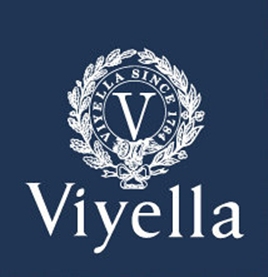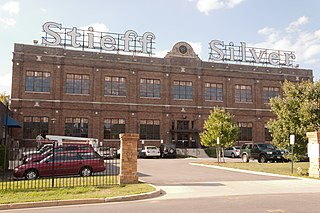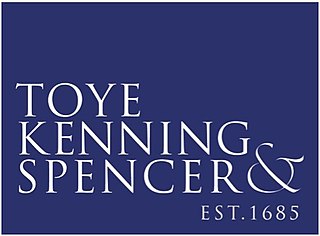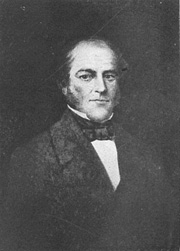
Machine embroidery is an embroidery process whereby a sewing machine or embroidery machine is used to create patterns on textiles. It is used commercially in product branding, corporate advertising, and uniform adornment. It is also used in the fashion industry to decorate garments and apparel. Machine embroidery is used by hobbyists and crafters to decorate gifts, clothing, and home decor. Examples include designs on quilts, pillows, and wall hangings.

A livery is an identifying design, such as a uniform, ornament, symbol or insignia that designates ownership or affiliation, often found on an individual or vehicle. Livery often includes elements of the heraldry relating to the individual or corporate body featured in the livery. Alternatively, some kind of a personal emblem or badge, or a distinctive colour, is featured.
Hecht's, also known as Hecht Brothers, Hecht Bros. and The Hecht Company, was a large chain of department stores that operated mainly in the mid-Atlantic and southern region of the United States. The firm originated in Baltimore, Maryland.

Stumpwork or raised work is a style of embroidery in which the stitched figures are raised from the surface of the work to form a 3-dimensional effect.

Union Square is a neighborhood located in the Sowebo area of Baltimore. It dates to the 1830s and includes a historic district of houses and commerce buildings.

Viyella is a blend of wool and cotton first woven in 1893 in England, and the "first branded fabric in the world". It was made of 55% merino wool and 45% cotton in a twill weave, developed by James and Robert Sissons of William Hollins & Co, spinners and hosiers. The brand name, first registered as a trademark in 1894, and registered in the United States in 1907, soon covered not only the original fabric, to be sold by the yard, but also clothing. At first this was made by separate businesses, but it was not long before Hollins started producing their own clothes and offering franchises to manufacturers who would use the Viyella label. Following increasing emphasis on garment manufacture over the years, Viyella is now a fashion brand for clothes and home furnishings made of a variety of fabrics. The original wool/cotton blend is no longer sold.

The Stieff Company, Silversmiths, Goldsmiths & Pewterers, located in Baltimore, Maryland, is also known as Kirk-Stieff after 1979.

Hollins Market is the name of the oldest existing public market building in the city of Baltimore, Maryland. It is a contributing property to the Union Square-Hollins Market Historic District.

The Starks Building is a landmark 14-story building on Fourth Street and Muhammad Ali Boulevard in Downtown Louisville, Kentucky, USA. It was built in 1913 on a site that had been the First Christian Church of Louisville. It was commissioned by local businessman John Starks Rodes and designed by the Daniel Burnham firm of Chicago. It is 202 feet (62 m) tall.

An embroidered patch, also known as a cloth badge, is a piece of embroidery which is created by using a fabric backing and thread. The art of making embroidered patches is an old tradition and was done by hand. During the first half of the twentieth century they were commonly embroidered using a shiffli embroidery machine. High-speed, computerized machines have led to mass production.

Toye, Kenning & Spencer is a British jewellery and clothing manufacturer based at Bedworth, Warwickshire; the Jewellery Quarter, Birmingham; and Covent Garden, London.

English embroidery includes embroidery worked in England or by English people abroad from Anglo-Saxon times to the present day. The oldest surviving English embroideries include items from the early 10th century preserved in Durham Cathedral and the 11th century Bayeux Tapestry, if it was worked in England. The professional workshops of Medieval England created rich embroidery in metal thread and silk for ecclesiastical and secular uses. This style was called Opus Anglicanum or "English work", and was famous throughout Europe.
Bloom Brothers Department Stores were located at sites in Franklin County, Pennsylvania, and Baltimore, Maryland, from the company's founding in 1897 as The Old Reliable Dry Goods Store until the closing of the Chambersburg, Pennsylvania, store in 1944.

"Mount Winans" is a mixed-use residential, commercial and industrial neighborhood in the southwestern area of the City of Baltimore in Maryland. Its north, south and east boundaries are marked by the various lines of track of the CSX Railroad. In addition, Hollins Ferry Road running to the south towards suburban Baltimore County in the southwest and further connecting with adjacent Anne Arundel County to the southeast, draws its western boundary.

The Faultless Pajama Company, originally E. Rosenfeld and Company and then the Rosenfeld & Steppacher Company, was a Baltimore-based garment manufacturer that began operation in 1881. The factory was located in downtown Baltimore, on the corner of South Paca and Lombard Streets, in what is now referred to as the Westside. It was one of the Baltimore garment industry's major employers.

H. Leh & Co., typically referred to simply as Leh's, was a department store located at 626 West Hamilton Street in Allentown, Pennsylvania. It was of what was an outside mall structure called the Hamilton Mall in the Center City portion of the city. Like many other downtown department stores of the time, however, it ultimately closed as suburban shopping malls gained market share at the expense of inner-city stores.

John Smith Hollins was Mayor of Baltimore from 1852 to 1854.
Metropolitan Partnership, Ltd. is a company engaged in real estate development in the Washington metropolitan area. It is notable for its unsuccessful bid to redevelop the Old Post Office Pavilion into a 245-room Waldorf Astoria hotel in partnership with Hilton Worldwide. Among its completed projects are the redevelopment of the former headquarters of The Washington Star at 1101 Pennsylvania Avenue, Tysons International Plaza, and Fairfax Square, all designed by architect David Childs, of Skidmore, Owings and Merrill.

Hollins Market is a neighborhood in the Sowebo area of Baltimore. It takes its name from the Hollins Market, the oldest public market building still in use in Baltimore City, which is located in the heart of the neighborhood.

Westside Baltimore is the western portion of downtown Baltimore that includes Market Center and many of the newest developments in downtown Baltimore. It has increasingly become the preferred residential section of downtown. It is also home to the site of the "Superblock" project that will include hundreds of condos and apartments as well as a variety of retail and commercial space. The former home of Baltimore's many and famed department stores, Westside Baltimore is now anchored by the University of Maryland, Baltimore consisting of the University of Maryland Health System, University of Maryland School of Law and the University of Maryland Biopark. The Westside is also home to several performing arts centers, including the Hippodrome Theatre, Royal Farms Arena and the future home of the Everyman Theatre.






















